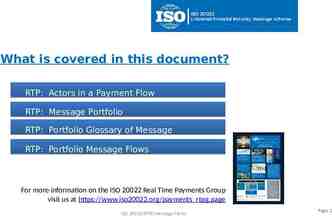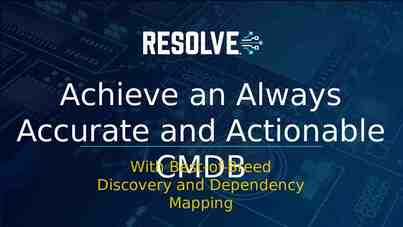Software Reuse Ian Sommerville 2004 Software Engineering, 7th edition.
23 Slides311.50 KB

Software Reuse Ian Sommerville 2004 Software Engineering, 7th edition. Chapter 18 Slide 1

Objectives To explain the benefits of software reuse and some reuse problems To discuss several different ways to implement software reuse To explain how reusable concepts can be represented as patterns or embedded in program generators To discuss COTS reuse To describe the development of software product lines Ian Sommerville 2004 Software Engineering, 7th edition. Chapter 18 Slide 2

Software reuse In most engineering disciplines, systems are designed by composing existing components that have been used in other systems. Software engineering has been more focused on original development but it is now recognised that to achieve better software, more quickly and at lower cost, we need to adopt a design process that is based on systematic software reuse. Ian Sommerville 2004 Software Engineering, 7th edition. Chapter 18 Slide 3

Reuse-based software engineering Application system reuse Component reuse The whole of an application system may be reused either by incorporating it without change into other systems (COTS reuse) or by developing application families. Components of an application from sub-systems to single objects may be reused. Covered in Chapter 19. Object and function reuse Software components that implement a single welldefined object or function may be reused. Ian Sommerville 2004 Software Engineering, 7th edition. Chapter 18 Slide 4

Reuse benefits 1 Increased dependability Reused software, that has been tried and tested in working systems, should be m ore dependable than new software. The initial use of the software reveals any design and implementation faults. These are then fixed, thus reducing the number of failures when the software is reused. Reduced process risk If software exists, there is less uncertainty in the costs of reusing that software than in the costs of development. This is an important factor for project management as it reduces the margin of error in project cost estimation. This is particularly true when relatively large software components such as sub-systems are reused. Effective use of specialists Instead of application specialists doing the same work on different projects, these specialists can develop reusable software that encapsulate their knowledge. Ian Sommerville 2004 Software Engineering, 7th edition. Chapter 18 Slide 5

Reuse benefits 2 Standards compliance Some standards, such as user interface standards, can be implemented as a set of standard reusable components. For example, if menus in a user interfaces are implemented using reusable components, all applications present the same menu formats to users. The use of standard user interfaces improves dependability as users are less likely to make mistakes when presented with a familiar interface. Accelerated development Bringing a system to market as early as possible is o ften more important than overall development costs. Reusing software can speed up system production because both development and validation time should be reduced. Ian Sommerville 2004 Software Engineering, 7th edition. Chapter 18 Slide 6

Reuse problems 1 Increased maintenance costs If the source code of a reused software system or component is n ot available then maintenance costs may be increased as the reused elements of the system may become increasingly incompatible with system changes. Lack of tool support CASE toolsets may not support development with reuse. It may be difficult or impossible to integrate these tools with a component library system. The software process assumed by these tools may not take reuse into account. Not-invented-here syndrome Some software engineers sometimes prefer to re-write components as they believe that they can improve on the reusable component. This is partly to do with trust and partly to do with the fact that writing original software is s een as more challenging than reusing other people’s software. Ian Sommerville 2004 Software Engineering, 7th edition. Chapter 18 Slide 7

Reuse problems 2 Creating and maintaining a component library Populating a reusable component library and ensuring the software developers can use this library can be expensive. Our current techniques for classifying, cataloguing and retrieving software components are immature. Finding, understanding and adapting reusable components Software components have to be discovered in a library, understood and, sometimes, adapted to work in a n ew environment. Engineers must be reasonably confident of finding a component in the library before they will make routinely include a component search as part of their normal development process. Ian Sommerville 2004 Software Engineering, 7th edition. Chapter 18 Slide 8

The reuse landscape Although reuse is often simply thought of as the reuse of system components, there are many different approaches to reuse that may be used. Reuse is possible at a range of levels from simple functions to complete application systems. The reuse landscape covers the range of possible reuse techniques. Ian Sommerville 2004 Software Engineering, 7th edition. Chapter 18 Slide 9

Des patt Com App As fram prod so Comp C O T S Pr ra develo inte rat g Lega wrap Con tic app Servi syste Prog ram libra The reuse landscape Ian Sommerville 2004 Software Engineering, 7th edition. Chapter 18 Slide 10

Reuse approaches 1 Design patterns Generic abstractions that occur across applications are represented as design patterns that show abstract and concrete objects and interactions. Component-based development Systems are developed by integrating components (collections of objects) that conform to component-model standards. This is covered in Chapter 19. Application frameworks Collections of abstract and concrete classes that can be adapted and extended to create application systems. Legacy system wrapping Legacy systems (see Chapter 2) that can be ‘wrapped’ by defining a set of interfaces and providing access to these legacy systems through these interfaces. Service-oriented systems Systems are developed by linking shared services that may be externally provided. Ian Sommerville 2004 Software Engineering, 7th edition. Chapter 18 Slide 11

Reuse approaches 2 Application product lines An application type is generalised around a common architecture so that it can be adapted in different ways for different customers. COTS integration Systems are developed by integrating existing application systems. Configurable vertical applications A generic system is designed so that it can be configured to the needs of specific system customers. Program libraries Class and function libraries implementing commonly-used abstractions are available for reuse. Program generators A generator system embeds knowledge of a particular types of application and can generate systems or system fragments in that domain. Aspect-oriented software development Shared components are woven into an application at different places when the program is compiled. Ian Sommerville 2004 Software Engineering, 7th edition. Chapter 18 Slide 12

Reuse planning factors The development schedule for the software. The expected software lifetime. The background, skills and experience of the development team. The criticality of the software and its nonfunctional requirements. The application domain. The execution platform for the software. Ian Sommerville 2004 Software Engineering, 7th edition. Chapter 18 Slide 13

Concept reuse When you reuse program or design components, you have to follow the design decisions made by the original developer of the component. This may limit the opportunities for reuse. However, a more abstract form of reuse is concept reuse when a particular approach is described in an implementation independent way and an implementation is then developed. The two main approaches to concept reuse are: Design patterns; Generative programming. Ian Sommerville 2004 Software Engineering, 7th edition. Chapter 18 Slide 14

Design patterns A design pattern is a way of reusing abstract knowledge about a problem and its solution. A pattern is a description of the problem and the essence of its solution. It should be sufficiently abstract to be reused in different settings. Patterns often rely on object characteristics such as inheritance and polymorphism. Ian Sommerville 2004 Software Engineering, 7th edition. Chapter 18 Slide 15

Pattern elements Name Problem description. Solution description. A meaningful pattern identifier. Not a concrete design but a template for a design solution that can be instantiated in different ways. Consequences The results and trade-offs of applying the pattern. Ian Sommerville 2004 Software Engineering, 7th edition. Chapter 18 Slide 16

5 0 D A 2 C A B C D B 0 Sub Obse Ob A: 4 B: 5 2 C: 1 D: 0 Multiple displays Ian Sommerville 2004 Software Engineering, 7th edition. Chapter 18 Slide 17

The Observer pattern Name Description Used when multiple displays of state are needed. Solution description Separates the display of object state from the object itself. Problem description Observer. See slide with UML description. Consequences Optimisations to enhance display performance are impractical. Ian Sommerville 2004 Software Engineering, 7th edition. Chapter 18 Slide 18

Obs Subjec Attach Upd Detach for al Notify o - Con Concre ob return Upd GetSta s subjec obs The Observer pattern Ian Sommerville 2004 Software Engineering, 7th edition. Chapter 18 Slide 19

Generator-based reuse Program generators involve the reuse of standard patterns and algorithms. These are embedded in the generator and parameterised by user commands. A program is then automatically generated. Generator-based reuse is possible when domain abstractions and their mapping to executable code can be identified. A domain specific language is used to compose and control these abstractions. Ian Sommerville 2004 Software Engineering, 7th edition. Chapter 18 Slide 20

Types of program generator Types of program generator Application generators for business data processing; Parser and lexical analyser generators for language processing; Code generators in CASE tools. Generator-based reuse is very cost-effective but its applicability is limited to a relatively small number of application domains. It is easier for end-users to develop programs using generators compared to other component-based approaches to reuse. Ian Sommerville 2004 Software Engineering, 7th edition. Chapter 18 Slide 21

A p tion plic Pr o g r a a t m or Ge a t o g r a e descr A p tion pli D tba kno wle Reuse through program generation Ian Sommerville 2004 Software Engineering, 7th edition. Chapter 18 Slide 22

Key points Advantages of reuse are lower costs, faster software development and lower risks. Design patterns are high-level abstractions that document successful design solutions. Program generators are also concerned with software reuse - the reusable concepts are embedded in a generator system. Ian Sommerville 2004 Software Engineering, 7th edition. Chapter 18 Slide 23






